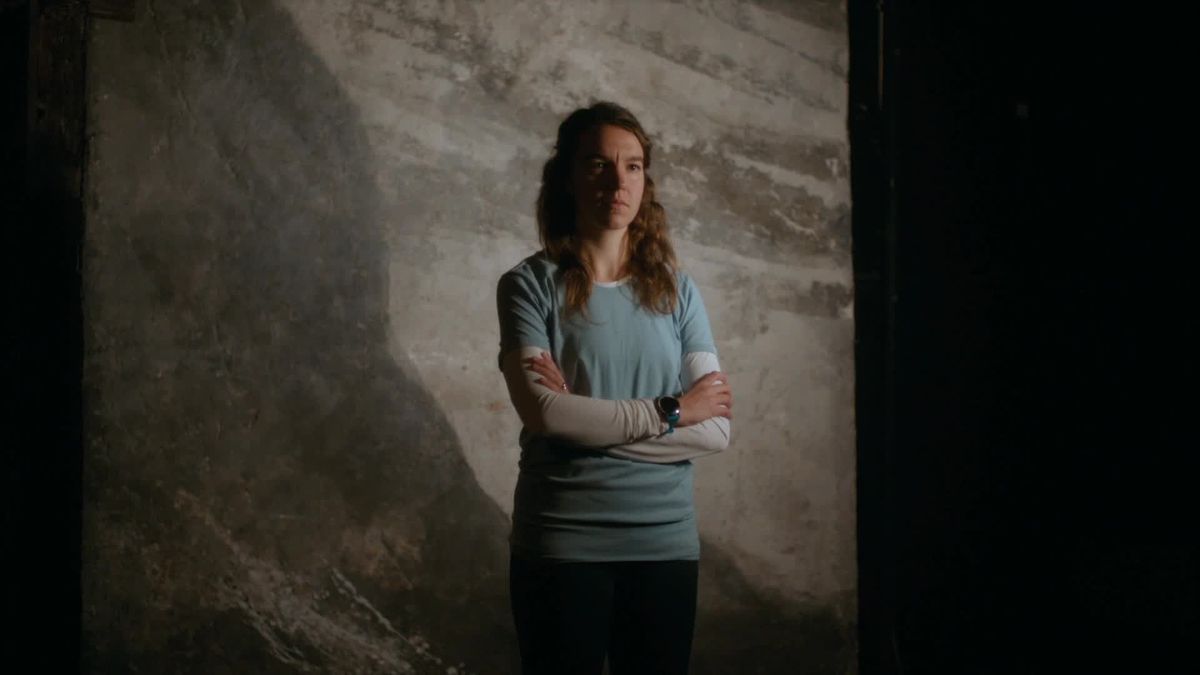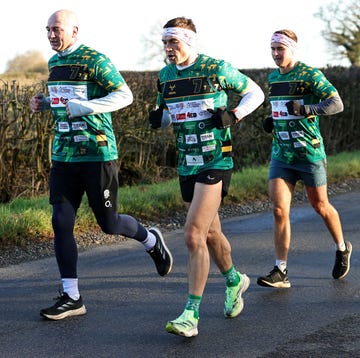The countdown is on - if not to the first sub-2:00 marathon, then at least to the first serious attempt at some version of it. This weekend, at a time and date that hasn’t yet been finalised pending a final weather check, Eliud Kipchoge, Zersenay Tadese, and Lelisa Desisa will take part in Nike’s Breaking2 race in Monza, Italy.
I’ve been following this project since last year. Now that the finale is at hand, I have a few miscellaneous tidbits to add.
Pacers
A story on the Nike site mentions that Bernard Lagat, the venerable five-time Olympian, is one of the pacers who will be guiding Kipchoge and company. At 42, Lagat’s middle-distance glory days are behind him, but training for this pacing job, according to the Nike story, has reinvigorated his desired to take a crack at Galen Rupp’s 10,000-metre American record of 26:44.36.
Lagat isn’t the only big-name pacer. A leaked photo of the “Pacer School” currently taking place in Italy showed a star-studded roster of pacers, including Americans Chris Derrick, Sam Chelanga, and Andrew Bumbalough, and sub-27:00 10,000-metre runner Stephen Sambu.
The photo, which includes 18 names, suggests that the pacers will work in teams of three and (in most cases) run three shifts of two laps (4.8K) at a time, with just under 30 minutes of recovery each time. It appears that two pacing teams, with a total of six runners, will be on the course at a time. (Nike hasn’t confirmed any of these details.)
Shoes
One of the big questions heading into the weekend is how much of an edge Nike’s new Vaporfly shoes will provide - and if they’re fair and legal. Testing at the University of Colorado suggested they provide a 4-percent boost in efficiency in treadmill tests lasting 5 minutes at a time, but how that translates to 26.2 miles on the road remains to be seen.
The most unusual feature of the shoes is the stiff carbon-fibre plate embedded in the insole. How unusual or unprecedented is this? Not as much as you might think - other companies such as Adidas and Fila experimented with very similar ideas in the late 1990s.
In fact, the Nike designer most associated with the new shoes, Geng Luo, completed his Ph.D. in 2012 at the University of Calgary under the supervision of Darren Stefanyshyn, who helped design the Adidas ProPlate that featured in shoes in the early 2000s.
When I called Stefanyshyn to ask about how the plates worked, he snapped a few photos of an old ProPlate to illustrate what they looked like:
In comparison, here’s what Nike’s plate (the dark shape in the middle between the two chunks of midsole foam) looks like:
They’re not identical, but you can certainly see the similarities in design and curvature. I’ve put in several requests to Adidas to find out more about the ProPlate, but - perhaps understandably, given the current controversy - they don’t seem eager to discuss it.
Interestingly, this page on the Adidas website has a picture of the ProPlate shoe that Haile Gebrselassie supposedly wore in setting a marathon world record in 2007. When I asked Adidas about that, they said that’s not correct, but didn’t reply to further questions about it.
One lingering question has been how the IAAF - whose ultra-vague shoe rules only forbid “unfair advantages” - would respond to the shoes. Nike runners have been wearing versions of the plate-stiffened shoe in major competitions for over a year, but some commentators have questioned whether they would eventually be banned, perhaps even retroactively. According to Nike, the IAAF has now concluded that the shoes conform to the rules and don’t require any further approvals. We’ll wait to see whether the IAAF goes ahead and backs that up publicly.
Pace car
Widely circulated photos from Nike’s half marathon dress rehearsal on March 7 showed the runners tucked behind a sleek black Tesla pace car with a large timing clock mounted on top of it, sparking speculation that the unusually tall timing clock was deliberately chosen to provide a drafting benefit.
When I asked the Nike team about the pacing car, they said the driver’s instructions were to stay at least 5 metres ahead of the runners, and respond to the runners’ pace (in order to avoid violating rules about the use of external pacemaking). These guidelines, they said, were based on advice about how things are done at Marathon Majors like the Chicago Marathon. Here, Runners crowned 2024 World Athletes of the Year.
But is the car providing a drafting advantage, even if it’s following the “usual” practices? To my regret, I didn’t ask that question. But a few cycling aerodynamics experts have recently weighed in on Twitter.
Andy Froncioni, who works with the Canadian national cycling team, noted that the aerodynamic wake behind a moving body is typically more than 10 times its diameter. That means a 2-metre-wide Tesla has a wake that extends back nearly 20 metres. “I think it *will* make a difference on a still day,” he wrote.
Dan Bigham, a British cyclist who has worked as an aerodynamicist in Formula One, also chimed in to agree that the car will offer some aerodynamic benefit. In fact, he added, the benefit will be even bigger if it’s a still day (which the Nike team is aiming for), because the car’s wake will be more stable.
In a sense, this debate is a perfect illustration of the controversies swirling around Nike’s project. Their stated goal is to optimise every possible detail, and in doing so they’re often simply repeating what others have done in the past - but in a more systematic, methodical way. It’s hard to say that the Breaking2 pace car crosses any specific line that hasn’t been crossed before, but it’s also hard to dismiss the idea that - as critics argue - the height of the pace clock on top of the car wasn’t chosen only to make it easy to read.
Predictions
So what’s going to happen this weekend? I’ve had lots of discussions with people (even, I should add, with many who profess to find the whole thing profoundly uninteresting!) about the probable outcomes. Back in December, when news of the project broke, I pegged the odds of a sub-2 at between 1 and 10 percent, with a 50 percent chance of someone running faster than the current record of 2:02:57.
That’s still roughly where I’m at, though I’m probably a bit closer to 1 than 10 percent, given that the weather forecast for the weekend looks to be on the warm side and I still haven’t seen proof that the pacers will be able to stay in formation for two hours.
What do those numbers mean in practice? I had an interesting e-mail exchange yesterday with Letsrun writer Jonathan Gault, who believes the chances of a sub-2 are far less than 1 percent. Did that mean, I asked, that he would be willing to take a £1,000 bet at 100-1 odds? No such luck.
Obviously, betting is an imperfect measure of gut feelings: I wouldn’t take a £100,000 bet paying on 2.1-to-1 odds on a coin toss, even though the odds are in my favor. Still, I think it’s a useful thought experiment, as a way of forcing yourself to put a number to your expectations.
If I offer to pay out £100 if no one runs sub-2 this weekend, what’s the maximum you would be willing to offer on the other end of the bet? If the number is £400, that suggests (in very broad strokes) that you think there’s a 20 percent chance a sub-2 will happen - a pretty substantial probability, when you think about it.
Of all the people I’ve spoken to, almost no one expects to see a sub-2. But I’d be very surprised if many observers were willing to give me more than 100-to-1 odds on it - and that, I think, says something pretty interesting about where we’re at. It’s also why it’s going to be fun to watch.














